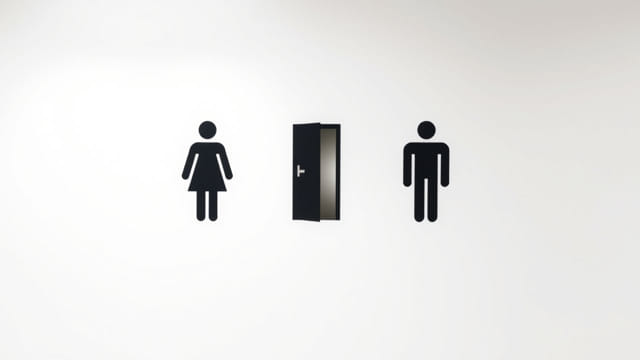When traveling in Japan, one of the most useful and essential phrases you can learn is how to ask where the restroom is. Whether you’re navigating a bustling train station, enjoying a meal at a local restaurant, or exploring temples and gardens, knowing how to ask for the nearest restroom can save you time and potential embarrassment. Japanese culture places great importance on politeness and clarity, so using the right phrase can also show respect to locals and help ensure you get the assistance you need.
Common Japanese Phrases to Ask for the Restroom
The Most Basic and Common Phrase
The most widely recognized and understood way to ask ‘Where is the restroom?’ in Japanese is:
ãã¤ã¬ã ã©ãã§ããï¼(Toire wa doko desu ka?)
This phrase breaks down into the following parts:
- ãã¤ã¬ (toire) A borrowed word from English, meaning ‘toilet’ or ‘restroom.’
- ã (wa) A topic ptopic, marking toilet as the subject of the sentence.
- ã©ã (doko) Means where.
- ã§ãã (desu ka) A polite sentence ending, turning the phrase into a formal question.
This full sentence is polite, easy to remember, and universally understood in Japan.
Shortened Versions for Casual Situations
While ‘Toire wa doko desu ka?’ is perfectly polite and clear, there are shorter ways to ask the same question, especially in informal situations:
- ãã¤ã¬ã ï¼(Toire wa?) Just asking Restroom? as a question. Useful if you’re already pointing or clearly asking for direction.
- ãã¤ã¬ã©ãï¼(Toire doko?) A slightly more casual version that still gets the point across.
Use these informal versions with friends, family, or people you’re close to. In public spaces or formal situations, it’s better to stick with the full polite form.
Understanding Other Words for Restroom in Japanese
Alternative Terms for Restroom
Though ‘toire’ is the most common term, Japan has several other words that may appear on signs or be used in more traditional settings:
- ãææ´ ã (otearai) Literally means hand wash, but commonly used to refer to restrooms in a polite or formal context.
- å粧室 (keshou-shitsu) Means powder room or makeup room. This term is often used in department stores, upscale restaurants, and airports.
- 便æ (benjo) A very old-fashioned term, still used in some rural areas or older public signage. Not commonly spoken in daily conversation today.
If you see any of these words on restroom signs, rest assured that they all indicate the same essential place.
Useful Variations and Related Vocabulary
How to Ask Politely in Different Settings
Here are a few additional helpful phrases that can be used in real-world situations when asking about a restroom in Japanese:
- ãã¿ã¾ããããã¤ã¬ã ã©ãã§ããï¼(Sumimasen, toire wa doko desu ka?) Excuse me, where is the restroom?
- ãææ´ ããæ¢ã ã¦ãã¾ãã(Otearai o sagashiteimasu.) I’m looking for the restroom.
- ãã¤ã¬ã使ã£ã¦ãããã§ããï¼(Toire o tsukatte mo ii desu ka?) May I use the restroom?
Starting with ‘sumimasen’ (excuse me) makes your request more polite and is commonly used when approaching strangers or staff members.
Words You May See on Signs
Public restrooms in Japan often use symbols, but you may also see written signs in Japanese. Here are a few terms to recognize:
- ç·æ§ (dansei) Men
- å¥³æ§ (josei) Women
- å¤ç®çãã¤ã¬ (tamokuteki toire) Multipurpose restroom (usually wheelchair accessible or includes baby changing facilities)
Recognizing these words can help you identify the appropriate facilities even if there are no English translations available.
Cultural Tips for Using Restrooms in Japan
Etiquette to Be Aware Of
Restrooms in Japan are generally clean and well-maintained, but there are a few cultural differences to keep in mind:
- Many restrooms have both Western-style and squat-style toilets. Look for signage or peek inside to choose the one you’re more comfortable with.
- Some bathrooms in older or rural places may not have toilet paper, so carrying a small pack of tissues can be helpful.
- It’s polite to flush immediately and clean up after yourself. Japanese restrooms often have signs reminding users of proper etiquette.
- Many toilets have advanced features, such as bidet functions and privacy sound effects. Buttons usually have English translations or icons, but experimenting carefully is key.
Being aware of these small but important differences can improve your experience and help you blend in respectfully.
Finding Public Restrooms Easily
Public restrooms are readily available in Japan. You can find them in:
- Train and subway stations
- Department stores and shopping malls
- Convenience stores (ask politely before using)
- Parks, museums, and tourist attractions
Because Japan prioritizes cleanliness and convenience, most restrooms are well-marked and open to the public. Asking someone, Toire wa doko desu ka? is usually all you need to find one nearby.
Knowing How to Ask for the Restroom in Japanese
Learning how to ask Where is the restroom in Japanese? is one of the most practical and courteous things a traveler can do. The phraseãã¤ã¬ã ã©ãã§ããï¼(Toire wa doko desu ka?) is simple, polite, and understood throughout the country. Becoming familiar with alternative terms likeãææ´ ãand restroom signage can enhance your travel experience, making everyday moments easier and more enjoyable. With this knowledge in hand, you can navigate Japan confidently and respectfully, no matter where your journey takes you.
